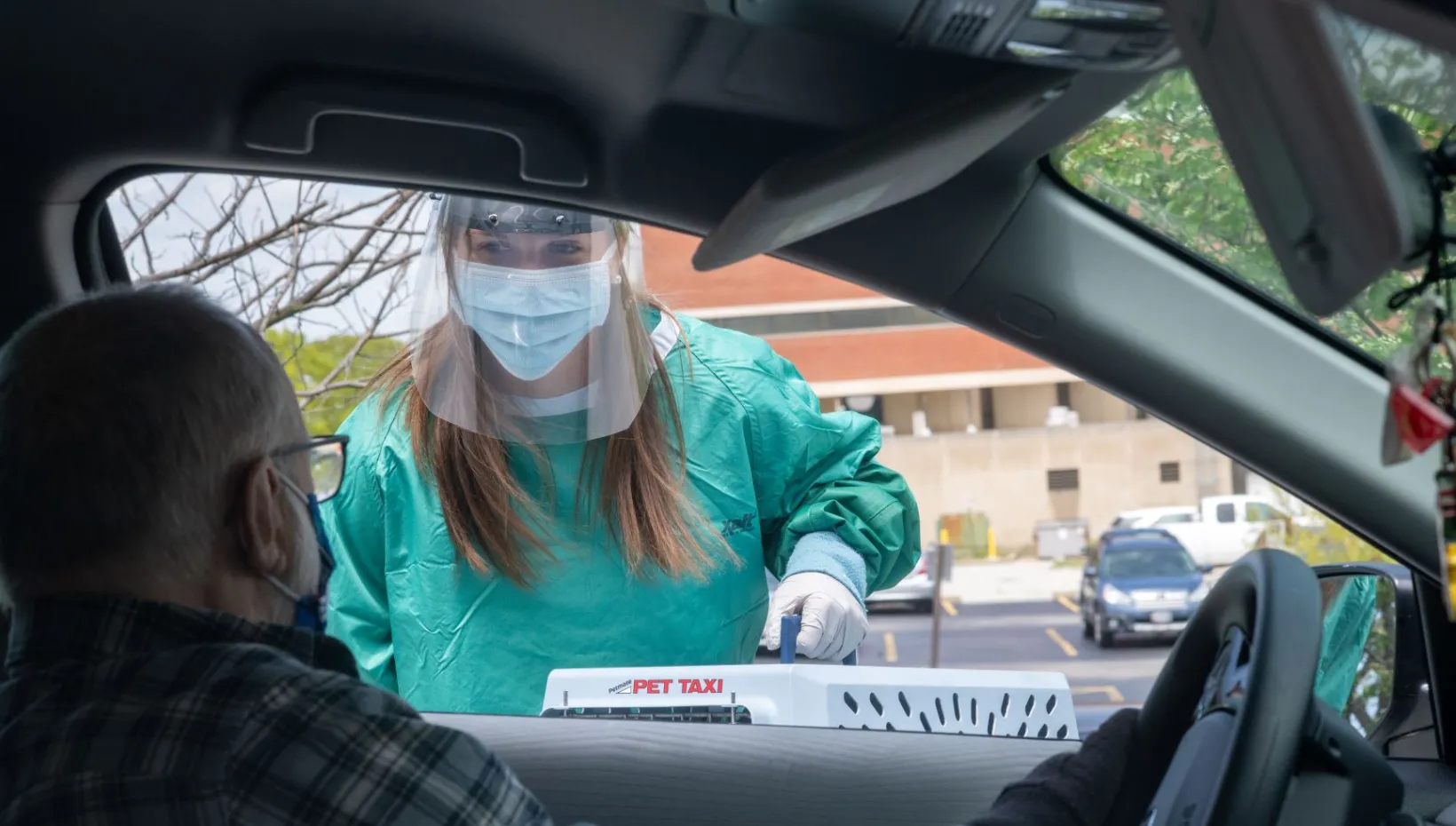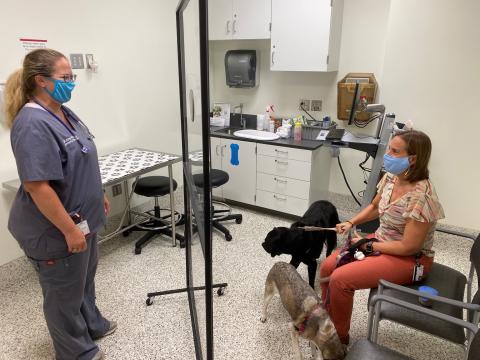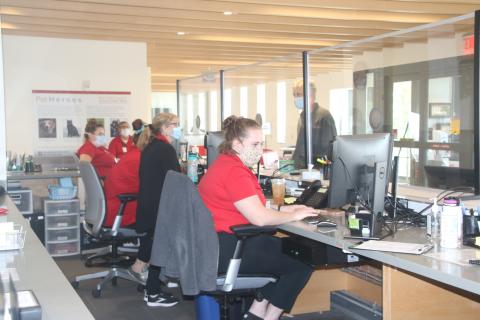Veterinary Medical Center hospitals provide frontline care throughout the COVID-19 pandemic

Article by: Allison Burk
Originally Published
The Ohio State University Veterinary Medical Center (VMC) is comprised of four hospitals – the Hummel & Trueman Hospital for Companion Animals; the Hospital for Farm Animals; the Galbreath Equine Center; and the VMC-Dublin, a satellite hospital offering urgent care, orthopedic and ophthalmology services for dogs and cats.
Operational challenges from COVID-19 met head-on
When faced with the COVID-19 pandemic, the VMC team quickly put necessary safety protocols in place, while also changing the operating status of each hospital to emergency and urgent care only. In addition, “curbside drop-off and pick-up” were implemented to limit the number or density of people inside the hospitals. Because our 162 fourth-year students were not permitted to return to campus during the early stages of the pandemic, many specialty service technicians and veterinary assistants were redeployed to the emergency service and curbside triage teams, in order to provide the necessary coverage and ensure business and service continuity.

This change in operating status required immediate communication with clients and referral partners to manage patient and client flow and ensure everyone’s comfort level with the safety precautions taken. Relevant signage was put in place at all hospitals, messaging guidance was provided to customer service teams, and website messaging was updated to alert clients to the procedural changes that would affect their visit to the VMC. Simultaneously, the VMC supply chain team immediately began sourcing personal protective equipment (PPE) for use after the moratorium on elective procedures was lifted, facing immense challenges due to increased global demand. However, their perseverance and diligence paid off, as they did an outstanding job of procuring the items necessary to keep the care teams operational.
“The VMC has remained open, in some capacity, throughout this pandemic. We have received many compliments from our clients regarding our safety protocols and measures. It was important for us to serve our community while keeping everyone safe in the process. Thanks to the dedication of our faculty, staff, and students, we have been able to do just that,” said Karin Zuckerman, MHSA, MBA, director of the Veterinary Medical Center.
Newly opened urgent care facility critical in managing patient load
In addition to the effect on the VMC’s campus-based operation, the COVID-19 pandemic posed a challenge to our referring veterinarian partners, who also had to change the way they received patients. The VMC-Dublin hospital had just launched a new urgent care service two weeks prior to the onset of the pandemic. The urgent care service was able to quickly adapt to a curbside-only drop-off operation, enabling the VMC to triage appropriate cases to that facility, resulting in an overall better response to the demands of the marketplace. To date, the VMC-Dublin urgent care service continues to see a robust patient caseload, with clients and area veterinary practitioners noting the service’s value to the community, particularly during the ongoing pandemic.
“The lockdown was a strange time to be launching and growing a brand-new service,” said Joanne Fleming, RVT, VMC–Dublin practice manager. “I am incredibly proud of our team for how quickly they adapted while still providing the highest level of patient care and customer service to keep our clients and patients safe.”
Launch of a new hospital information system advances veterinary health system
The timing of the pandemic also delayed plans to launch a new Hospital Information System (HIS) in early April. However, due to the incredible efforts of team members from VMC administration, Veterinary Information Systems (VIS), faculty, and staff, the VMC was able to launch the new system in August. The HIS is comprised of an electronic medical records system (ezyVet), replacing the former hybrid system (VetStar) with some electronic features and paper-based components, and three referral portals that collectively provide increased operating efficiencies, access and communication between referring veterinarians and the VMC team.

“The HIS implementation has been a huge accomplishment for the entire veterinary health system, especially during an ongoing pandemic! The faculty, staff, students, and administrative teams all worked together to adopt ezyVet successfully. While we are still adjusting to this enormous change, ezyVet provides many daily efficiencies that allow us to offer an even greater level of veterinary care and teaching at the VMC,” said Jordan Nerswick, MHA, PMP, RHIA, project manager for the Hospital Information System project.
It is the collective and tireless efforts of these faculty, staff and students, working long hours on the front lines of Ohio State’s Veterinary Medical Center throughout the ongoing COVID-19 threat, which truly demonstrates our commitment to delivering exceptional customer service and accessible and outstanding care to clients and patients. It truly represents our ambition to Be The Model® referral veterinary medical center of choice.